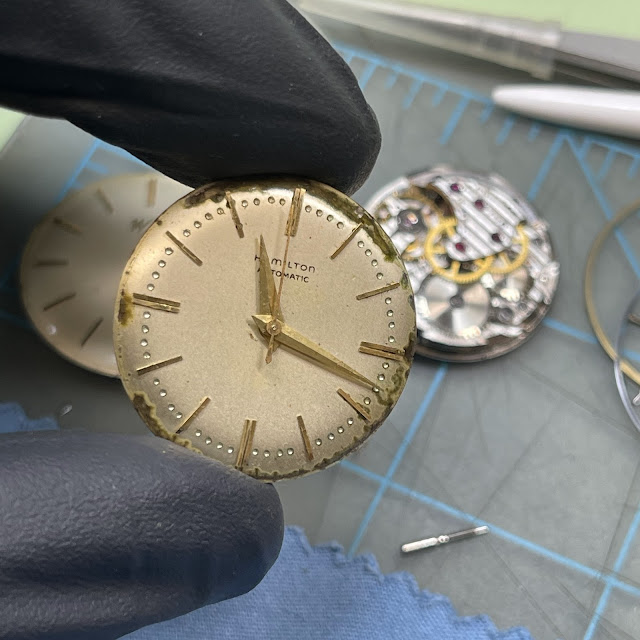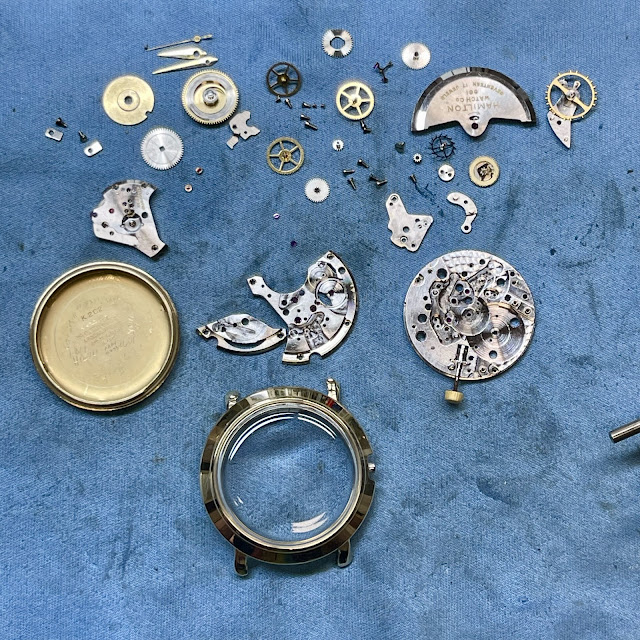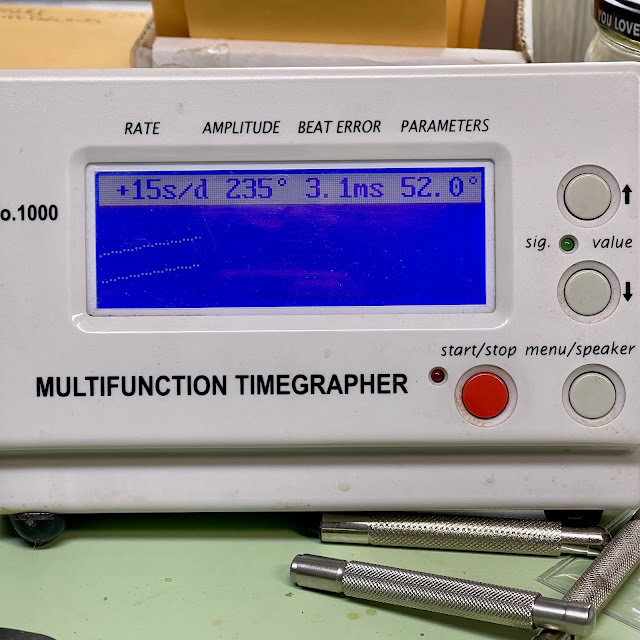Vintage Hamilton Watch Restoration
Information about vintage Hamilton watch repair, restoration, models, and advice for collecting and collectors
Welcome
Friday, July 4, 2025
The Hamilton Field Guide is available!
Saturday, June 21, 2025
1956 Automatic K-202
The mid-1950s was really the golden age for Hamilton innovation. Automatic models were introduced, Electric models were introduced, calendar models were introduced, shock jeweled balances were introduced, etc. etc. and over only a handful of years.
That's not to say that the prior decades of Hamilton production lacked innovation. It's simply that between 1955 and 1959 - there was a tremendous amount of new features added to the Hamilton lineup.
One of the early automatics was the 1956 Automatic K-202. It was cased in solid 14K gold. It was produced for only two years but you can find them in both silver butler finished dials as well as black. What makes the K-202 interesting is it had luminous hands but the radium paint was added to the back of the hands so it glowed onto the dial and silhouetted the hands. I'm sure it was a very cool look but the radium eventually took it's toll on the finish of the dial. The lume eventually burned out and no longer glowed but the damage would continue since the radium never goes away.
Saturday, June 14, 2025
1953 Rodney
This weekend is Father's Day and it's the first Father's Day I'll celebrate without my old man. My Dad passed away last October and although I believe in the communion of saints, it's just not the same without him.
My dad used to tell me the story of his Hamilton watch that he received for graduation and how he lost it horsing around in a snowball fight in the early 1960s. He didn't recall exactly what it looked like, other than it was round, but he knows it was a Hamilton. I showed him all the catalogs from the applicable period like a witness perusing mugshots - but to no avail.
A number of years ago I gave my father one of my favorite models - a 1953 Rodney. It was produced through 1964 so it could very easily have been a match for his long-lost watch. We pretended it was, anyway.


































